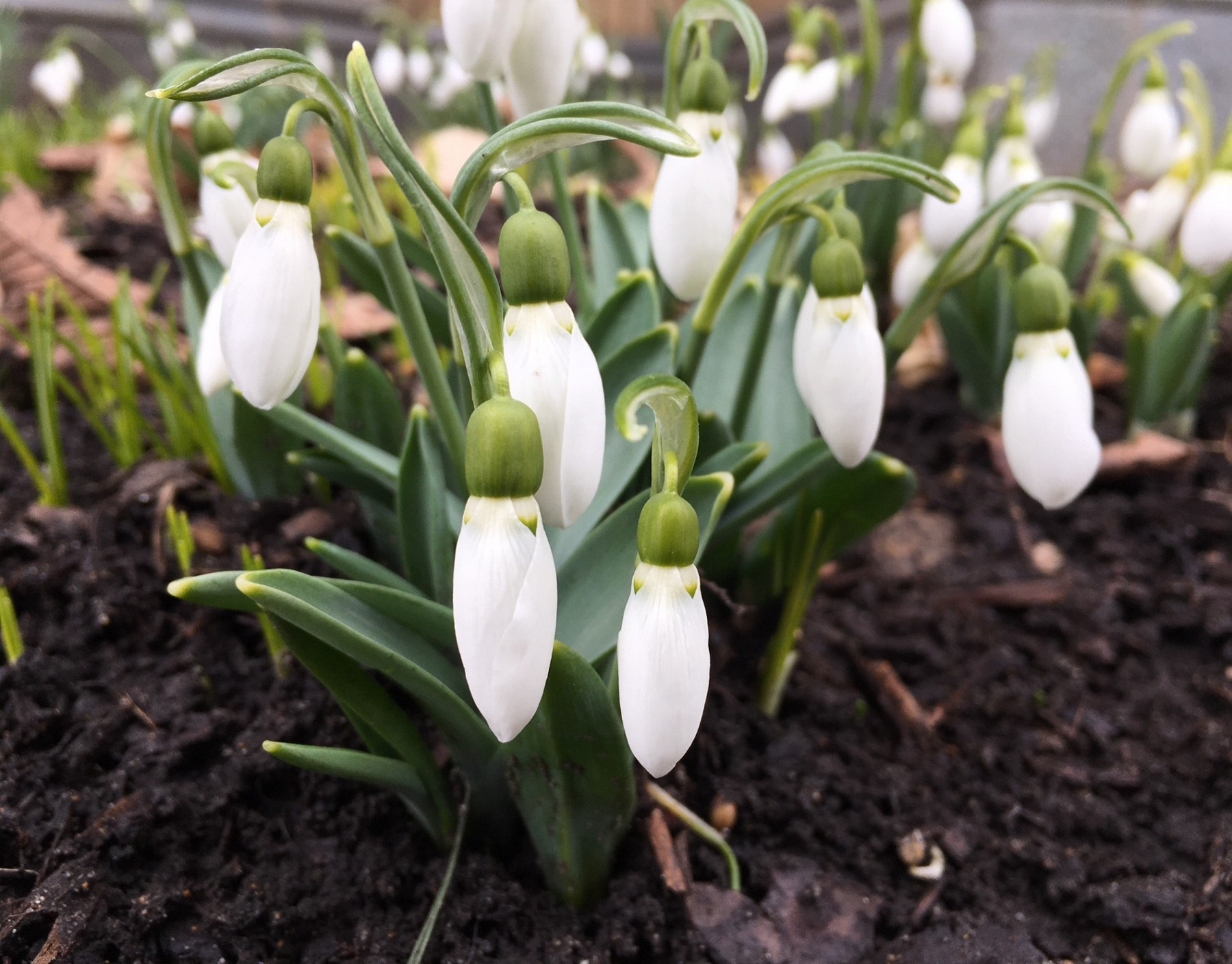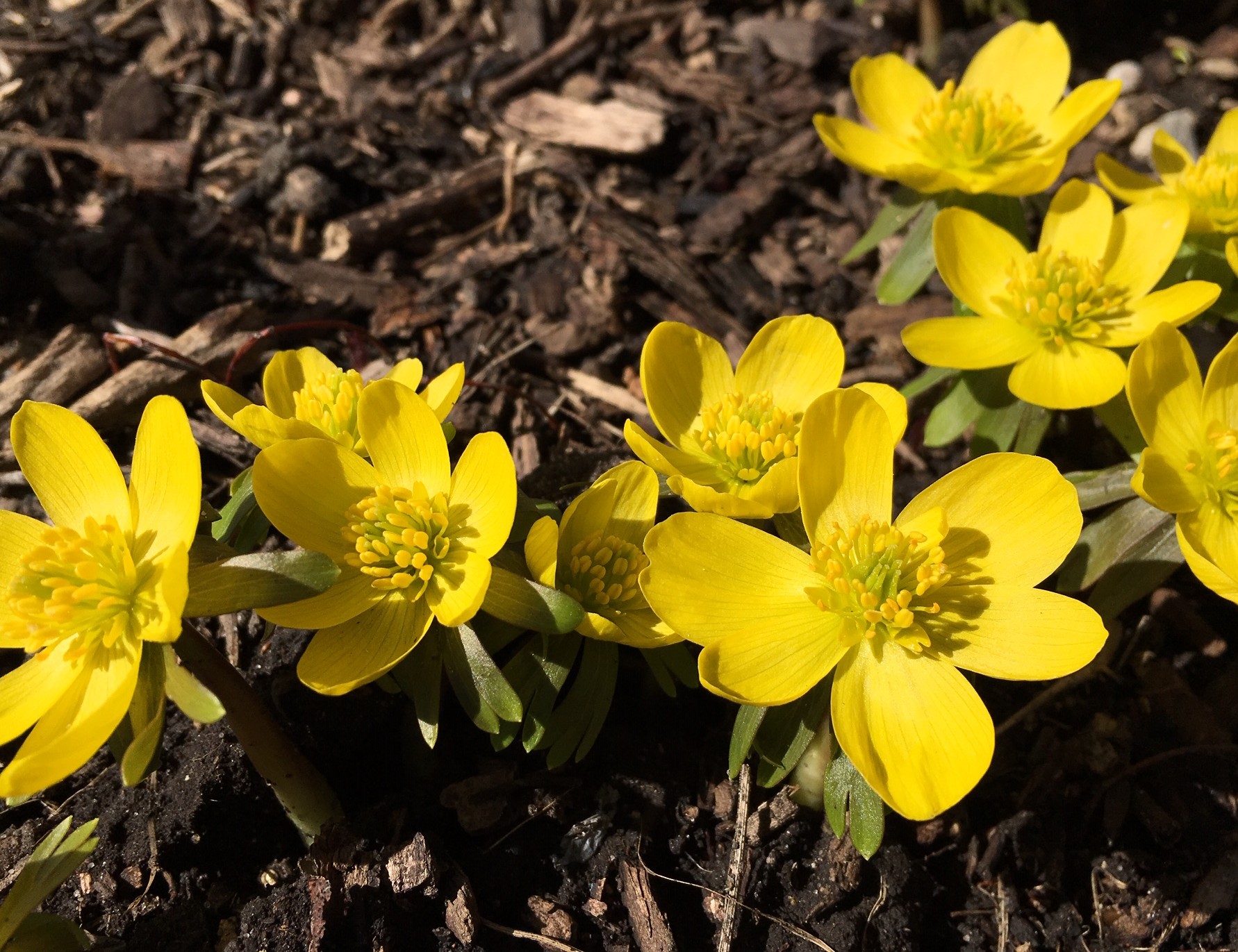
I was trudging home from the drugstore on a sidewalk damp with melting snow under the weight of a February sky, and there they were: snowdrops. The flowers, not quite open, dangled from their delicate stalks above the gray mulch like little freshwater pearls.
No long-stemmed rose in a florist’s shop can outshine a snowdrop. You can buy a dozen red roses from Ecuador or Colombia any time and it doesn’t necessarily mean a thing. But when a clump of tough little snowdrops, right out there in the cold soil with a freezing night coming on, is nonetheless ready to take the leap and bloom, it means there’s hope.
Snowdrops (Galanthus, various species) are the earliest of the bulbs that usher in spring in our gardens. In their native Europe, they can be seen as early as January, but here in the Midwest it’s more like late February to mid-March. This winter has been on the not-too-wild side, with only a few nights of truly bitter cold, so it’s not a big surprise to see the snowdrops open early.

Now that I’ve seen snowdrops, I’ll know to keep my eyes peeled for bright yellow winter aconite (Eranthus hyemalis) scattered across a dormant lawn, and soon, maybe, little low lavender-blue fluffs of snow crocuses (Crocus tommasinianus).
A plant needs a gambler’s heart to bloom early in a shifty Midwestern spring. The jet stream can turn like the flip of a card and sweep the North Pole down through Canada right into your flower bed. Snow is welcome insulation but never guaranteed, and many an unguarded snowdrop has been reduced to mush by one night of sub-zero cold that freezes water into ice crystals to shred the cells of its pearly petals.
These plants may risk early flowering because they’re not really evolved to anticipate the full range of dangers here. All of them are imports from Europe and the mountains of Central Asia, where winters may be cold, but—at least until recently—perhaps not as variable as in the Midwest. Blooming early may be safer where they came from.

Our native plants have spent enough crazy winters around here to evolve caution. We won’t see the earliest woodland wildflowers, like bloodroot (Sanguinaria canadensis) and hepatica (Hepatica acutiloba), until well into March.
To have absolutely safe early spring bulbs, you can force them indoors. A conservatory makes it easy. You just pot spring bulbs up in fall, keep the pot in a cool but sheltered place over the winter, and in January or February, place them in the sunlight in the warmth of the greenhouse and start watering the soil. In a few weeks you’ll have white snowdrops and colorful crocuses.
If you select and combine your bulbs carefully into several pots—not just early bulbs but tulips, daffodils, hyacinths–you can keep flowers blooming in the conservatory for months.
But they won’t be as brave as the snowdrops by my front walk.










